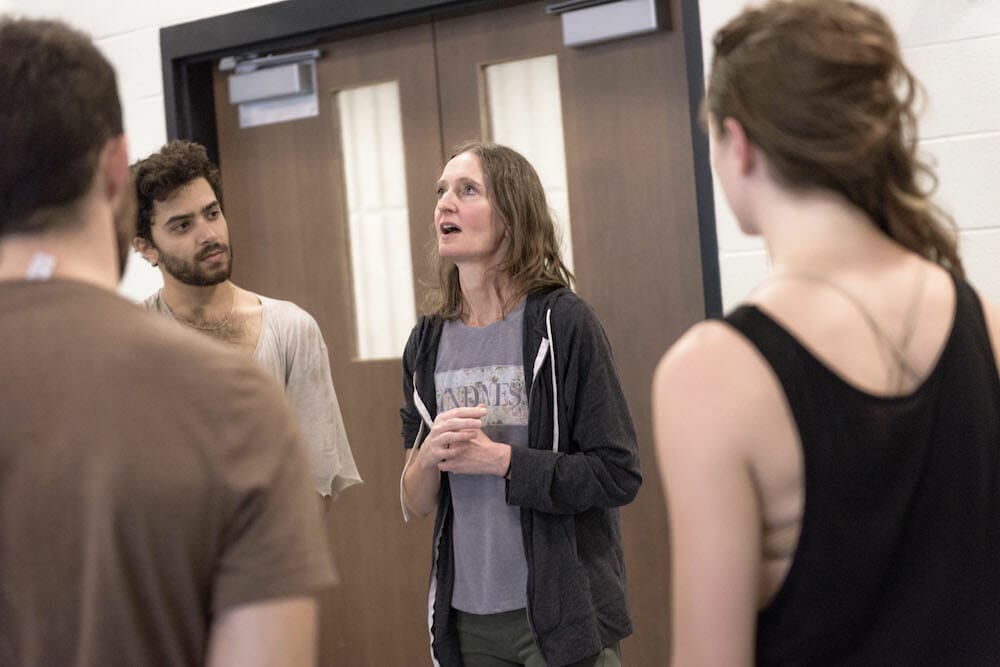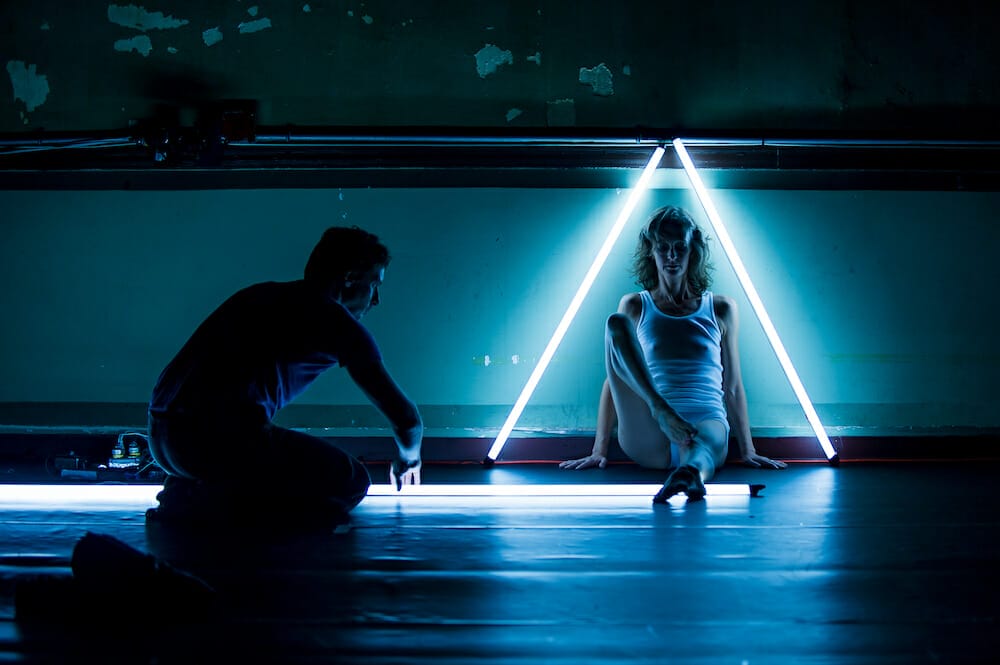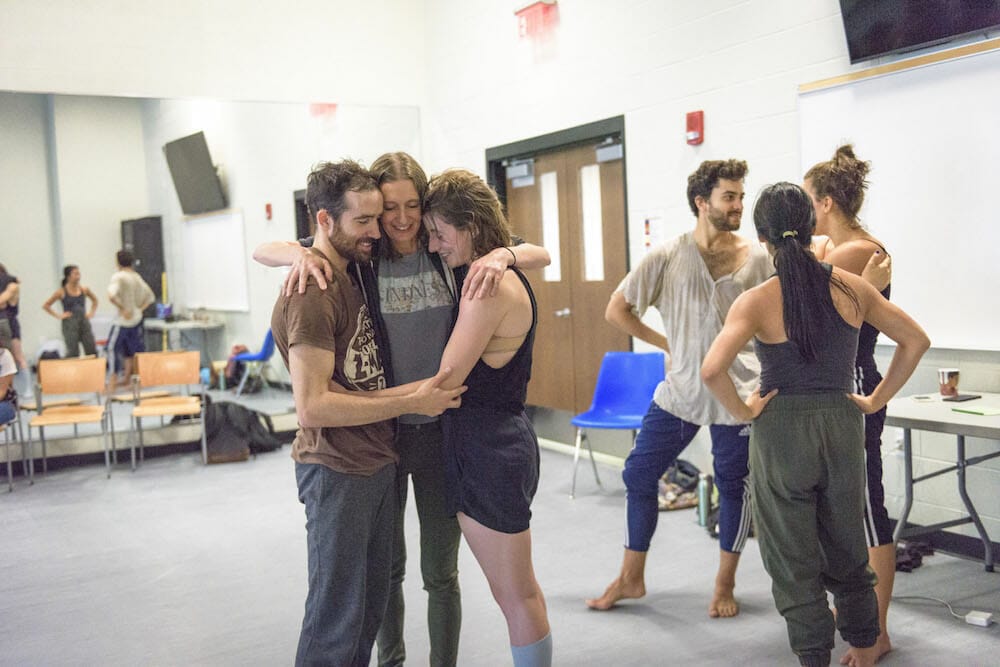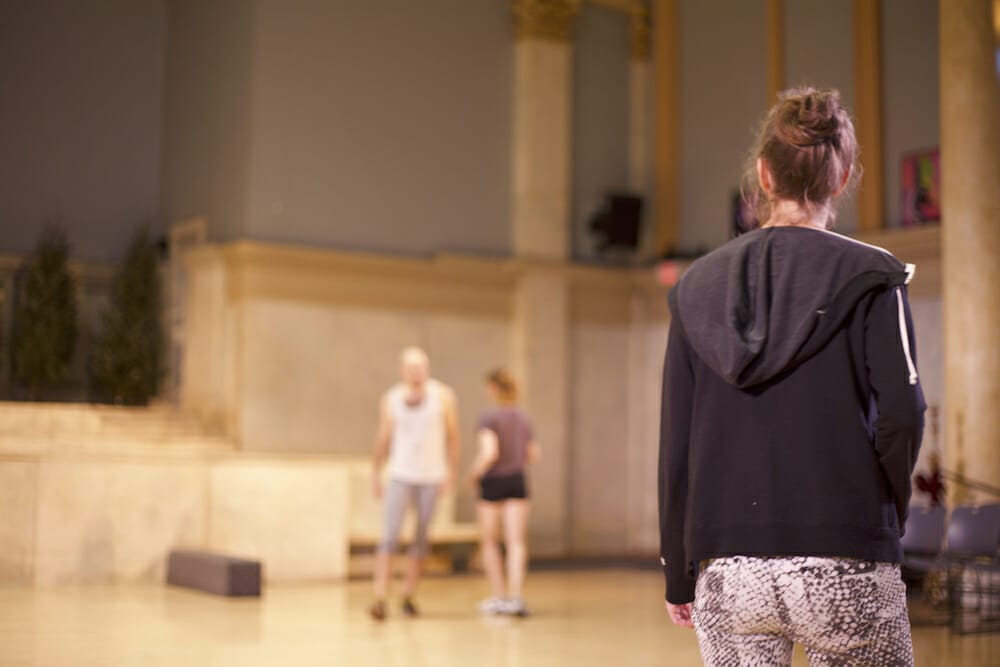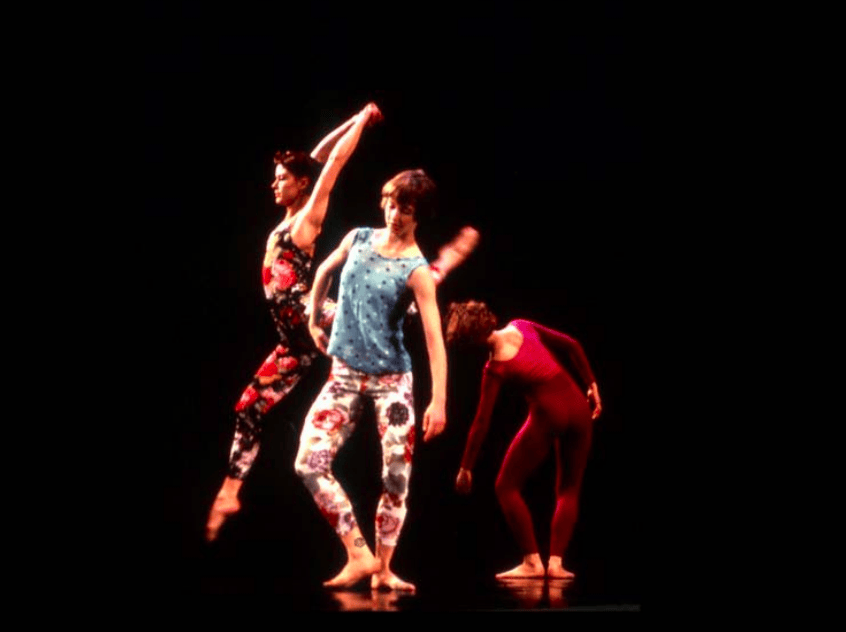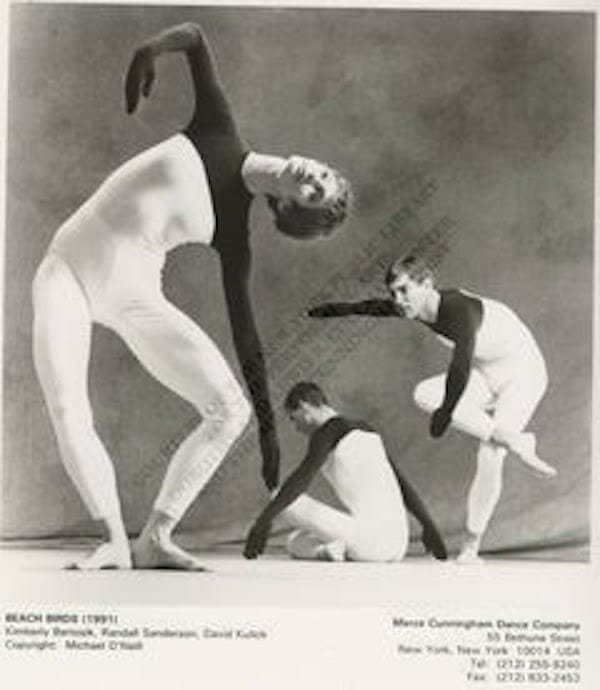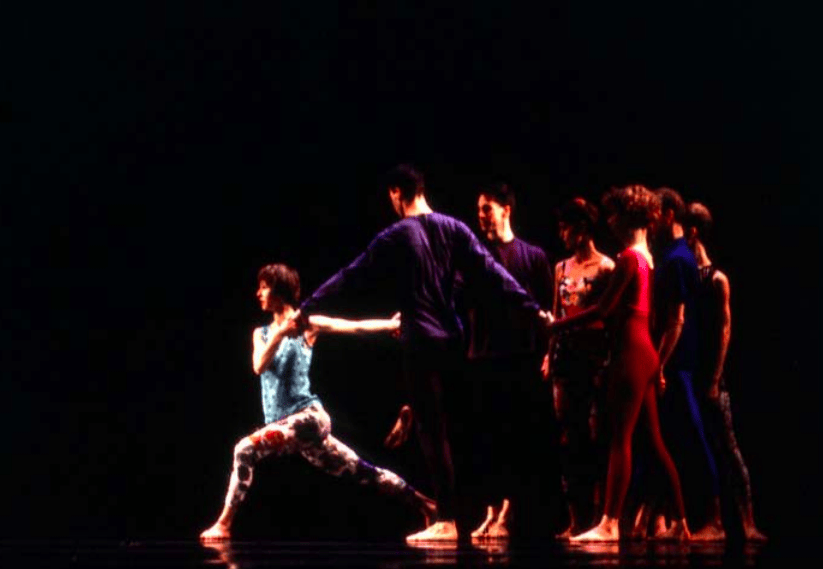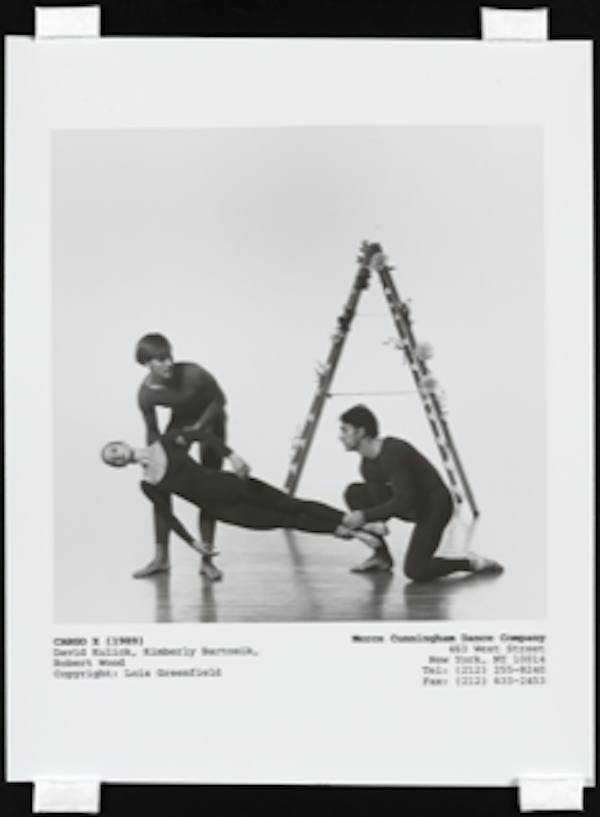When:
January 30 – February 1, 2020
7:30 pm
Where:
Dance Center of Columbia College Chicago
1306 S Michigan Avenue
Chicago
Kimberly Bartosik, former dancer with Merce Cunningham Dance Company, and her company Kimberly Bartosik/daela will make their Chicago debut with her collaborative work I hunger for you.
I hunger for you is a reflection on faith and its power to transform the body. Bartosik, who choreographed this work in close collaboration with her performers, draws on her personal experience with Charismatic spirituality and delves into the heart of losing one’s self in ecstasy, ritual and desire. Lighting and set design are by Roderick, original music is by Sivan Jacobovitz (arranged with Bartosik), and costumes are by Harriet Jung.
Here, Picture This Post (PTP) talks with Kimberly Bartosik (KB) about this work and her prior work with Merce Cunningham Dance Company.
(PTP) You have said you find inspiration in literature and cinema. How does that inspiration manifest itself in I hunger for you?
(JB) For I hunger for you (IHFY), there was actually no direct literary inspiration, but I did think about cinematic time—ways that film can hold, expand, extend, collapse our sense of time. In IHFY there’s a deep sense of the desire to connect—to oneself, to another, to a force outside of oneself that we cannot see. By playing with time as a way to hold these desires—and the insistence in the work on the experience of the present moment (coupled with my collaborations with my Lighting Designer)—I think the work has a cinematic sensibility without being overtly aestheticized the way film can be.
What is the role of faith in this work? Why do you feel this is a timely topic for artists to address?
In IHFY, we addressed ideas about faith in a bigger than religious sense. Faith in life, in oneself, in another person, in our choices, in the unknown. Even though the work had its origins in reflecting on my experiences of growing up in a household that practiced evangelical spirituality, I didn’t want to make a piece about or referencing a specific religion, but rather the everyday acts of faith that we engage in.
Please tell PTP readers about your work with the Cunningham company
I danced for Merce from 1987 to 1996. My journey from, through, and in resistance to Merce’s work has been very complex and rich, and rather than trying to summarize it, I will share an essay I recently wrote for the Black Mountain College Museum + Arts Center in Asheville, NC, our final tour stop for IHFY in spring 2020.
Editor’s Note: Please find a link to this essay en toto at the bottom of this article.
Photos below -- archival photos of Kimberly Bartosik dancing with Merce Cunningham Dance Company
In terms of the performances that most shaped my work, I would answer that learning and performing in the reconstruction of Winterbranch (1964), with a radical lighting design by Robert Rauschenberg (who also designed the costumes), and a screeching score by La Monte Young, was the most influential piece—for its risk, violence, physical, and theatrical drama, and continued relevance—it is a work that is both part of its historical moment but also has resonance outside of its history. When Los Angeles Dance Project/LADP reconstructed the work in 2014, audiences went running from the theater. I remember thinking how wonderful it was that, 50 years after its making, this piece was still so provocative. Why make any other kind of work???
What advantages—or challenges—have you experienced working with your husband, who is the set and lighting designer of I hunger for you?
Roderick Murray—or Rick—has been my designer since I started making my own work. He is the only designer I have ever worked with. If I worked with anyone else, it would be the end of our marriage, but each project is also both an end as well as a beginning! The biggest advantage is that there’s no designer I’d rather work with. Rick is bold, innovative, daring, refusing to work with most repertory plots a theater offers. We have a basement in our Brooklyn apartment where he builds most of his own light objects. You’ll see some of these in Chicago in the fluorescent field that will be hanging above the audience.
The challenges are less professional than personal. We used to be very bad at allowing ourselves to blow up in front of everyone when something wasn’t working. Then I had to recognize that we needed to develop a language of working together that wasn’t reflective of how we communicated at home. We needed boundaries to contain our emotional responses to each other’s work. Now we are much better at finding ways to express what’s not working as well as remain positive about what we love. I honestly couldn’t make anything without him. It’s a marriage of people and passions! Plus ... we have a kid!
How did your collaboration with the composer come about and evolve?
Sivan is the first composer I’ve ever collaborated with. I just never had the resources to hire someone prior to IHFY, and so I had always made all of my own scores. In brief—we met by pure chance in fall 2017 at Brooklyn Academy of Music/BAM during the opening night of Pina Bausch’s Rite of Spring. Sivan and his friends were sitting in front of me, Rick, and daughter Dahlia—and Dahlia photo bombed their selfies which made them turn around. We were all so excited to be there that we started a conversation. A few months later, I sat in the same seat for a different show, and Sivan was again in front of me. We remembered each other and I—being beyond excited about being part of 2018 BAM Next Wave—told him he should come to see my work the next fall. He handed me his card and said, “If you ever need, I make music.” I checked his stuff out and became convinced it was worth a try.
We are a completely unlikely pairing but perfect match! Sivan is a young musician who works mostly outside of dance, so he doesn’t have a tight hold on what he makes. Rather, he generously offers me sonic ideas that he creates from conceptual prompts I send him, and I then use and edit these as I need. The sound for IHFY isn’t placed on top of the dance. Rather it’s as if it comes essentially from the bodies of the dancers and the piece itself. Sivan’s score is a highlight of IHFY. He taught me that it’s ok to make a dance with music that has a beat and emotion in it!
Do you enjoy working and performing in dance education environments? What advice do you have for those newly embarking on a dance career?
I thrive on working in dance educational environments.
My advice: Only do it if you have to.
Quoting Merce Cunningham’s seminal 1955 essay, The Impermanent Art: “You have to love dancing to stick to it. It gives you nothing back, no manuscripts to store away, no paintings to show on walls and maybe hang in museums, no poems to be printed and sold, nothing but that single fleeting moment when you feel alive. It is not for unsteady souls.”
How would you describe the evolution of your work as a choreographer through the years?
I have been on a journey of discovering how to make theatrical work that has emotional impact, but where the emotion comes from the physical, non-ego infused journey of the performers. Recently my process has focused on rigorous physical research with virtuosic performers towards achieving intense energetic states, which, pushed to an extreme, result in a breaking down of form, leaving the body in a vulnerable, deeply human state. This play with power and vulnerability has become the core of my process. The performers, rather than showing us an emotion, are vessels through which the audience experiences themselves and their own emotional life. Coming from my history of working with Cunningham and its form for form’s sake philosophy, this has been a complex, rich process of reinvention (more on this in the Black Mountain essay).
You are a brave soul coming to Chicago in late January for your company’s debut in our city! What are you looking forward to about being here?
Well, scheduling is everything when it comes to touring, so I probably wouldn’t have chosen January if I had a choice! But, in fact, I was born in Evanston, Illinois (my dad was getting his PhD at Northwestern) and I’ve been back to Chicago only a handful of times in my life, so this is a wonderful adventure. I’ve been an admirer of [the Dance Center’s Dance Presenting Series Director] Ellen Chenoweth for many years—mostly for her writing—and felt very excited to develop this artist-presenter-organization relationship together. I love to tour when there’s a relationship in place and when there’s the potential to build something deeper with a community than just dropping in with a dance. Ellen and the Columbia College staff and faculty are fantastic partners and very interested in pairing me and my extraordinary cast with the college and community. It’s what makes it all worth it!
Anything else you’d like to share to help PTP readers get a sense of your work?
The most profound and radical experience of making IHFY was the inclusion of a young performer, or young witness (my daughter, Dahlia) in the work. As an artist who relies heavily on the maturity of artists, this was a deeply instinctual artistic move that came towards the end of the creation process.
We were in the middle of a residency in France in summer 2018, and the piece was pretty much finished in terms of its structure. But something about it felt too heavy, too dark, and the themes were too weighted. I needed hope. So, I remember thinking that I needed another presence and decided that I wanted a young witness. Dahlia, who is neither a trained performer nor dancer, (at first) reluctantly agreed to join, but decided her payment of “two gelatos a day” was worth the experiment. I’ve used her very particularly. She doesn’t perform; she just sees. We then see through her, and we’re reminded what it is that a child sees in this world; and you start to feel like maybe a child shouldn’t be seeing this. So, she is now actually a key part of people’s relationship to the work. There’s no space for cynicism with a child.
Dahlia’s presence in I hunger for you left an indelible mark on the audience and blew open my vision of what my work can achieve. It so deeply impacted me that my newest work, through the mirror of their eyes (premiering in March 2020 at New York Live Arts), has three children as part of the cast.
Read Kimberly Bartosik’s recent article about her work with Merce Cunningham written for Black Mountain College Museum + Arts Center in Asheville.
Tickets:
$30 (Discounts for seniors and students)
For more information, visit the Dance Center of Columbia College Chicago website.
Photos courtesy of Kimberly Bartosik and the Dance Center of Columbia College Chicago


